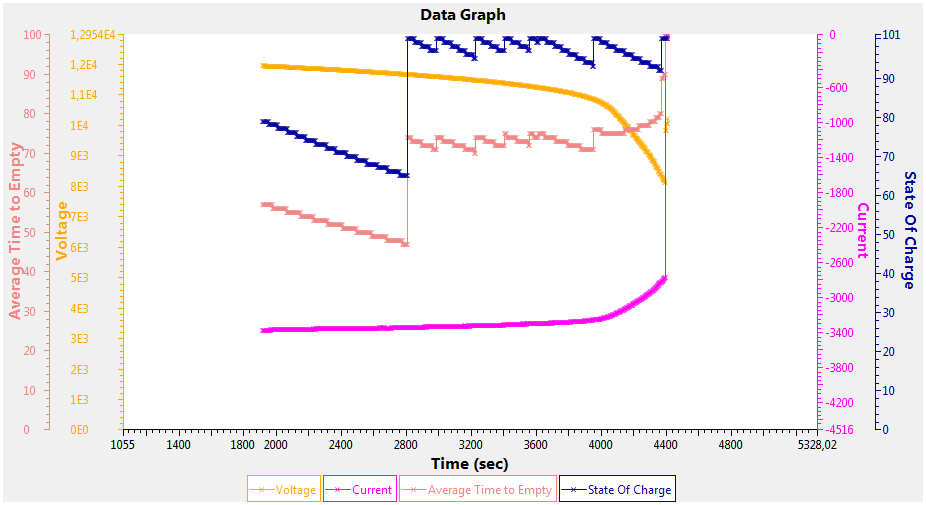Hi,
I have an optimized firmware with my Lead acid battery.
In fact, I learned to BQ optimized cycle, Chem ID... And everything is good.
Now, I want to verify gauge in my application. So I charged my battery and everything are OK.
But after that, when I discharged my battery under ~ C/2 I have a big problem:
Average time to Empty and SOC is too high at the end of discharge. See this below:

The discharge of battery are stopped under 8V ( < Vcell terminate voltage)
you can see that SOC = 20% and average time to Empty = 22min, it's a big problem for knowing cut of battery !
Can you explain why ?
Thank you,
Best regards,
Loïc



